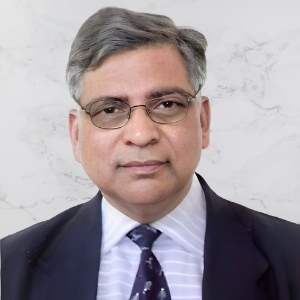Title : Application of Artificial Intelligence and Remote Sensing (AIRS) to study the correlation of climate change with ocean energetics (OSIRIS) to develop ‘Numerical Ocean Cryosphere- Energetics Model’(NOCEM)
Abstract:
By making use of Artificial Intelligence and Remote Sensing (AIRS), the present study aims to understand Ocean Energetics by studying the morphological and dynamical properties of Oceans at Sea-Surface(SS), Sub-Sea-Surface(SSS), and Deep-Sea Surface(DSS) levels e.g., Sea Surface Temperatures (SSTs), Sub-Sea Surface Temperatures (SSSTs), Deep-Sea Surface Temperatures (SSTs), Salinity, Marine Pollution due to toxic gases , Ocean Systems Interactions, Risks, Instabilities, and Synergies (OSIRIS) to develop first ‘Numerical Ocean Energetics Model(NOEM)’. Next, the aforesaid studies are to be conducted at Cryosphere Surfaces (CS), Cryosphere (CSS), and Deep-Cryosphere Surface (DCS), by studying the morphological and dynamical characteristics e.g., melting of the glaciers, ice sheet stability, ice and bedrock coring, ice sheet modelling, and ice sheet processes over the Cryosphere, in order to substantiate the developed ‘Numerical Ocean Energetics Model (NOEM)’into ‘Numerical Ocean Cryosphere- Energetics Model’(NOCEM)’,through the computational Correlational techniques by using High-Resolution Satellite imageries, data access, assimilation; HPC and cloud computing for real-time analysis and Artificial Intelligence to explore the deep seas. Seminal scientific research is needed to develop Numerical Ocean Cryosphere- Energetics Model (NOCEM), over the North Atlantic-Arctic Sector, to understand the major Atmospheric challenges due to extreme weather events caused due to mesoscale convective systems, Global Carbon Cycle, dynamical and morphological properties, along with sub- mesoscale dynamics of Arctic ice sheet stability, Cryosphere (Arctic), Oceanic Atmospheric regions. Hence, efforts art on the Co-evolution of climate and marine life in the Arctic-Antarctic-Sea through the Correlation of Ocean-atmosphere-cryosphere interactions with Climate Variability i.e., to evaluate the correlation between the impacts of multiple stressors on the ocean and the associated risks of abrupt state shift, rising of sea level, melting of the glaciers, vis-à-vis climate change. Next, through the process of Initialization, Computation, Parameterization, within the (1 x 1) deg. grid-box by the computer algorithm, the Numerical Prediction Models for Ocean - Cryosphere Climate variability over Arctic & North Atlantic regions would be evolved by studying the kinematic features of the mesoscale convective systems over Arctic- North Atlantic Ocean regions and, be correlated with ocean-cryosphere Climate variability on time & Space Scales; at the local, regional and global levels through the extracted Sea and Cryosphere Surface Temperature over the grid box(10 -1 0 ) , attributing the regional change to natural and anthropogenic radiative forcing agents to bring out the few optimum values of the (OSIRIS) to develop ‘Numerical Ocean Cryosphere- Energetics Model’(NOCEM).
Keywords: Ocean and Cryosphere Energetics, Toxins, Climate Change, Ocean Systems Interactions, Risks, Instabilities, and Synergies (OSIRIS), ice sheet stability, ice and bedrock coring, ice sheet modelling, ‘Numerical Ocean Cryosphere- Energetics Model’(NOCEM).
Audience Take Away Notes:
- The audience would not only learn Ocean Energetics (Sea Surfaces and Cryosphere Surfaces) comprising morphological and dynamical properties of Oceans and Cryosphere at Surface (S), Sub-Surface (SS), and Deep Surface (DS) levels e.g., but, also about the changes in Temperatures, Salinity, Marine Pollution, Ocean Systems Interactions, Risks Instabilities, and Synergies (OSIRIS), ice sheet stability, ice and bedrock coring, and ice sheet processes over the Cryosphere, in order to develop ‘Numerical Ocean Cryosphere- Energetics Model’(NOCEM).



